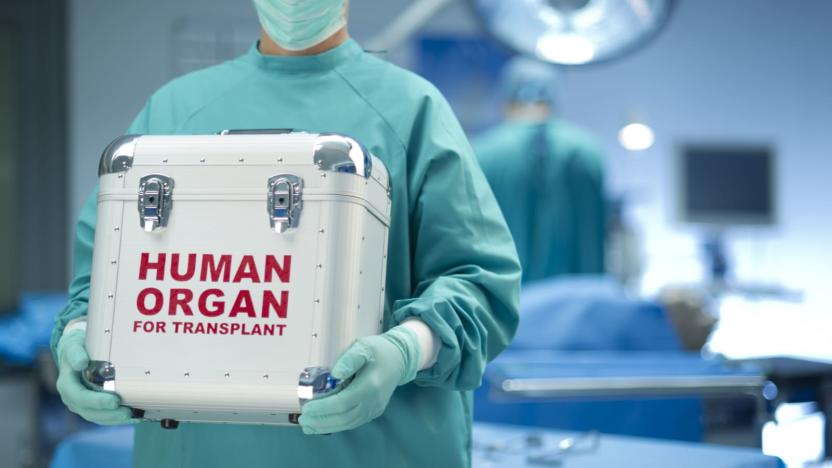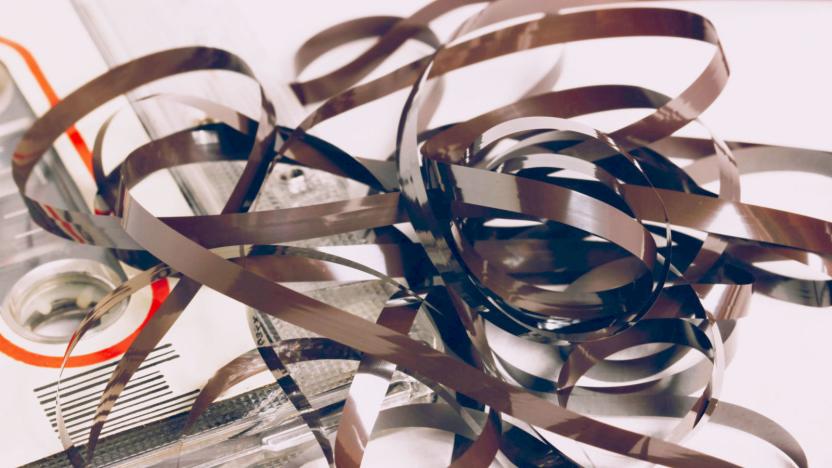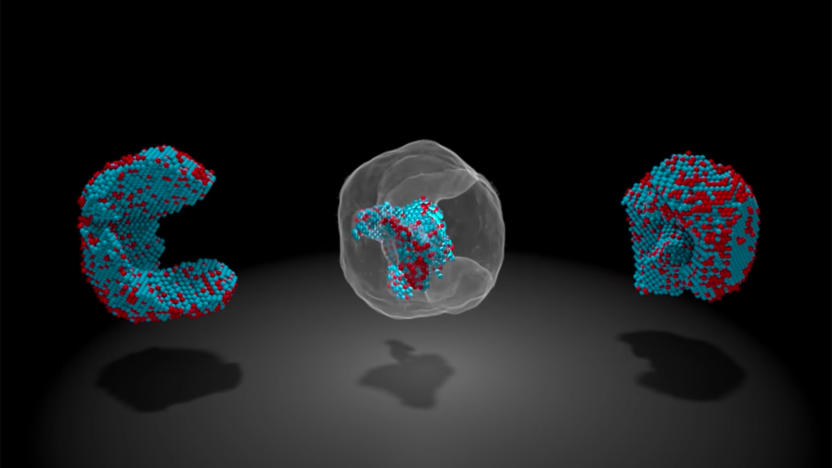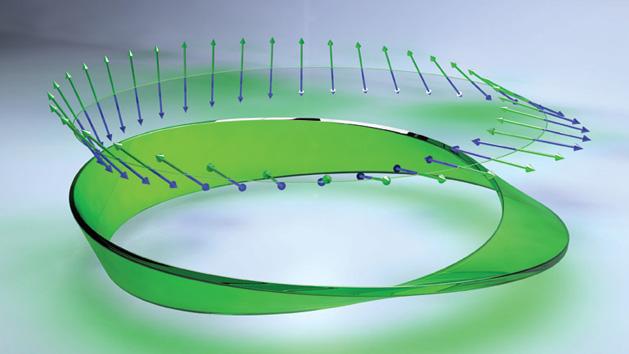nanoparticles
Latest

What if your next electric car's body was also its battery?
EV batteries are large and expensive. Nanom thinks it has a solution: a cheaper, longer-lasting cell that can be built right in to the structure of a vehicle.

Researchers create '2D' gold a million times thinner than a fingernail
Scientists have created the world's thinnest gold. At just two atoms thick, the material is one million times thinner than a human fingernail, which is big news for the tech industry. Gold is already used in a range of applications such as engineering, aerospace, as well as in medicine -- gold nanaoparticles play a significant role in cancer treatment, for example -- but in a "2D" form it has the potential to be used even more efficiently.

A nanoparticle-coated skin patch could treat obesity and diabetes
A new study out today in ACS Nano presents an interesting and effective way to reduce fat stores in the body. Researchers at Columbia University and the University of North Carolina showed that a patch loaded with nanoparticles could reduce fat, increase energy expenditure and ameliorate type-2 diabetes in obese mice.

Nanoparticles fool your body into allowing organ transplants
Organ transplants are frequently life-saving, but they remain a gamble when your body can reject the new organ well after the initial surgery. Yale researchers have discovered a clever solution to this: prevent your body from noticing the organ until it settles in. They've developed a drug delivery system that uses nanoparticles to slowly supply small interfering RNA (siRNA) that stops your body's white blood cells from attacking the organ as a foreign presence. Instead of lasting mere days, the siRNA lasts as long as 6 weeks. This won't necessarily eliminate the rejection response, but it should be far easier to control if and when it kicks in.

Sony and IBM created 330TB data tapes for a massive analog archive
Storing data on magnetic tape is back, baby. Sony has announced that thanks to a partnership with IBM Research in Zurich, the pair have developed a magnetic tape cartridge capable of storing 201 gigabytes of data per square inch for a total of 330 terabytes per cartridge. Previously, IBM's analog storage maxed out at 123 gigabytes per square inch.

Scientists map every atom inside a nanoparticle
Even the smallest defects can create serious problems. It's a good thing, then, that researchers have found a way to map nanoparticles at an "unprecedented" level of detail -- they've located the 3D positions of all 23,000 atoms in an iron-platinum particle. The group used an extremely high-resolution transmission electron microscope (TEAM I) to capture 2D projections of the nanoparticle's structure, and used an algorithm to stitch those together into a 3D reconstruction. If there's a missing or misplaced atom, you could easily spot it.

Simple breath test can detect cancer and 16 other diseases
Ancient Greek physicians figured that our breath was a strong health indicator, but researchers from the Israel Institute of Technology have proven just how true that is. They developed a device that uses nanoparticles to identify 17 different diseases, including lung cancer and Parkinson's disease, from just a single breath. While the machine isn't accurate enough yet for real-life clinical diagnoses, it shows high promise as a quick, non-invasive test that could catch diseases in their early stages

ICYMI: Skyjumping science experiments and more
try{document.getElementById("aol-cms-player-1").style.display="none";}catch(e){}Today on In Case You Missed It: University of Melbourne researchers studying non-sized crystals (that might one day be used to store greenhouse gases) needed to know what the nanoparticles would do in low-gravity, so they jumped off a plane while holding them. Scientists from Ohio State developed a bottle coating to let shampoo and soap inside of plastic bottles flow freely, rather than get stuck. This maker got really excited about visualizing what the inside of modern computer looks like, so he built a huge one. As always, please share any interesting tech or science videos you find by using the #ICYMI hashtag on Twitter for @mskerryd.

Scientists use nanoparticles to crush lingering fat cells
If you think losing weight is simply diet plus exercise, the equation is not so simple. A recent study of Biggest Loser participants showed that even if you manage to drop pounds, your body will fight you for years afterward to gain them back. That's why scientists have put so much effort into studying obesity in an effort to help us fight our own genes. Researchers from MIT and Brigham and Women's Hospital think that our ubiquitous friends, nanoparticles, could deliver drugs to specific parts of the body, turning bad fat cells into good ones that burn fat.

Scientists write with nanoparticles using a laser and a bubble
Nanoparticles are extremely small -- less than 100 nanometers in size -- but they can have a big impact on medicine, solar technology, batteries, computing and other industries. Nanoparticles are generally more reactive, stronger and more versatile than other molecules, though at just one-billionth of a meter in size, they're notoriously difficult to maneuver. But, that final barrier may disappear soon. Engineers Yuebing Zheng, Deji Akinwande and Andrew Dunn at the University of Texas' Cockrell School created a technique that allows researchers to deftly pick up individual nanoparticles and move them to specific locations. The creators call it "bubble-pen lithography."

Light-triggered nanoparticles kill drug-resistant bacteria
Many current attempts at killing drug-resistant "superbugs" amount to racing against time, whether it's improving research technology or developing germ-fighting techniques that are less likely to promote resistance. That's not really an effective long-term strategy, is it? However, University of Colorado scientists might have a more permanent solution. They've developed light-triggered nanoparticles (specifically, quantum dots) that can kill stubborn bacteria on demand. They're dormant when it's dark, but shining the right light wavelength will make the particles attack infected cells. And unlike metal nanoparticles, they won't inadvertently wreck healthy cells in the process.

Nanoparticle-based windows could switch colors on demand
One day, you might not need special bulbs to give your room's lighting a different hue -- you'd just tell the windows themselves to change. Rice University researchers have discovered that you can change the colors transmitted through glass by sending a voltage through pairs of gold and silver nanoparticles, which you frequently find in stained glass windows. Jolt a window one way and you'd get a bright red; reverse the voltage and you'd get blue. All you're really doing is forming or removing chemical bridges between the particles.

Medicine-covered nanoparticles could help stroke victims
Doctors have been working for years on using tiny nanoparticles covered in clot busting drugs to clear blocked vessels in stroke victims. The only problem is that when a vessel is completely blocked, a lack of blood flow in the affected area is a problem. Strokes can be treated by inserting a stent into the clot, then opening it to pull the clot out but it can cause damage to the artery or dislodge pieces of the clot that get stuck elsewhere. Scientists at Harvard and UMass have struck on a method for using a stent to burrow a small hole through the clot, then releasing the nanoparticles into it. The increased pressure in the channel activates the drugs, which attach to the clot, break it up and continue to work on busting it up even as parts break off -- check after the break for a quick video showing the process in action.

This tiny nanoscale wrench can tinker with molecules
This could be the tiniest, most adorable wrench you'll ever (not) see. A team of scientists lead by Severin Schneebeli at the University of Vermont has developed a nanoscale wrench that can control microscopic objects and will lead to making next-generation customized materials. It's just 1.7 nanometers in length and works by the power of molecular chirality: this is where two molecules are identical in composition, yet opposite -- like your left and right hands.

Nano-sized 'yolks' should lead to longer-lasting batteries
Those eggs you might have had for breakfast? They're not just food -- they may be the key to longer-running batteries in your devices. Scientists at MIT and Tsinghua University have developed a nanoparticle battery electrode whose egg-like design is built to last. Their invention, which houses a shape-changing aluminum "yolk" in a titanium dioxide cell, can go through charging cycles without degrading like the graphite electrodes in conventional power packs. That could improve not only the overall longevity of the battery, but also its capacity and maximum power. You'd have gadgets that not only hold out for longer between charges, but don't need to be replaced quite so often under heavy use.

Light therapy now treats even the deepest cancer
Light therapy is a safe, easy way to kill cancer and treat other diseases, but it's normally limited by its nature to illnesses that are skin-deep. Washington University researchers aren't daunted, however. They've developed a phototherapy method that brings light directly to tumor cells, no matter how deep they are. The technique has you ingesting sugar combined with radioactive fluorine and light-sensitive, cancer-fighting nanoparticles. When you go through a PET scan, the sugar lights up and promptly kicks the nanoparticles into high gear. Effectively, this is a Trojan horse -- since tumors eagerly absorb sugar, they're sowing the seeds of their own demise.

Scientists make a Mobius strip of laser light
Unless you count incidents in Star Trek episodes, Möbius strips don't really occur in nature -- you have to create that freaky one-sided shape yourself. However, a worldwide team of scientists may have produced the next best thing. They've created a Möbius strip of light by manipulating the polarization of the light's inherent electromagnetic field. The trick involves firing a highly focused laser beam through a liquid crystal lens to give it a very specific polarization. When the light scatters at the focal point with the help of a nanoparticle, that polarization creates tiny, twisted loops. While these strips were made in a lab, of course, the experiment shows that they're at least possible in nature.

Scientists dream up a credit card that no one can forge
One downside of bank cards is that, with the right equipment and know-how, they're pretty easy to clone. That's not just a problem for the people whose cash gets stolen, but also for the banks that are tasked with preventing fraud. It appears that credit card cloning may become a thing of the past if a theoretical system from the University of Twente becomes a reality. Rather than using numerical codes which, as Target, Sony and others will attest, are only as secure as the box they're stored in, this new method uses quantum physics.

Researchers working on nanobots that directly attack tumors to cure cancer
For all the advancements we've made with technology and medicine, a cure for cancer still eludes us. But maybe that's because we haven't enlisted nanoparticles to attack tumors just yet. New research from the University of California's Davis Cancer Center, spotted by PhysOrg, suggest that could be a reality sometime soon. By attaching a tumor-recognition module to a nanorobot, doctors would be able to both diagnose a cancerous growth and inject drugs directly into the carcinoma. This would effectively target only the malignant cells and leave the surrounding areas unharmed -- taking things a few steps further than, say, the nanodiamonds we've heard of. It's a stark contrast to how chemotherapy treatment typically works, too, which is a blanket attack on all of a certain type of cell that often inflicts as much collateral damage as it does good. Who knows, a world where cancer patients don't have their hair or bone marrow destroyed during treatment might not be too far off after all. [Image credit: Shutterstock / StockLite]

$20 reusable chip detects type-1 diabetes quickly and cheaply
Researchers from Stanford University have developed a microchip that could make it much less costly to diagnose type-1 diabetes. The debilitating disease often strikes children, and the quicker it's detected, the easier it is to treat. The current test, however, is a time-consuming, costly burden for both hospitals and patients, requiring radioactive materials and several days of time. The new chip uses gold nanoparticles that cause fluorescent materials to glow when telltale antibodies are detected. Unlike the old tests, only a pinprick of blood is required, and the $20 chip can be reused up to 15 times. Such diagnostics could compliment other diabetes research, like Google's glucose detecting smart contacts, along with potential treatments or even cures. Researchers said the test will be particularly useful in countries where the standard test is too expensive, and are now working to launch it globally. [Image credit: Stanford University/Norbert von der Groeben]










